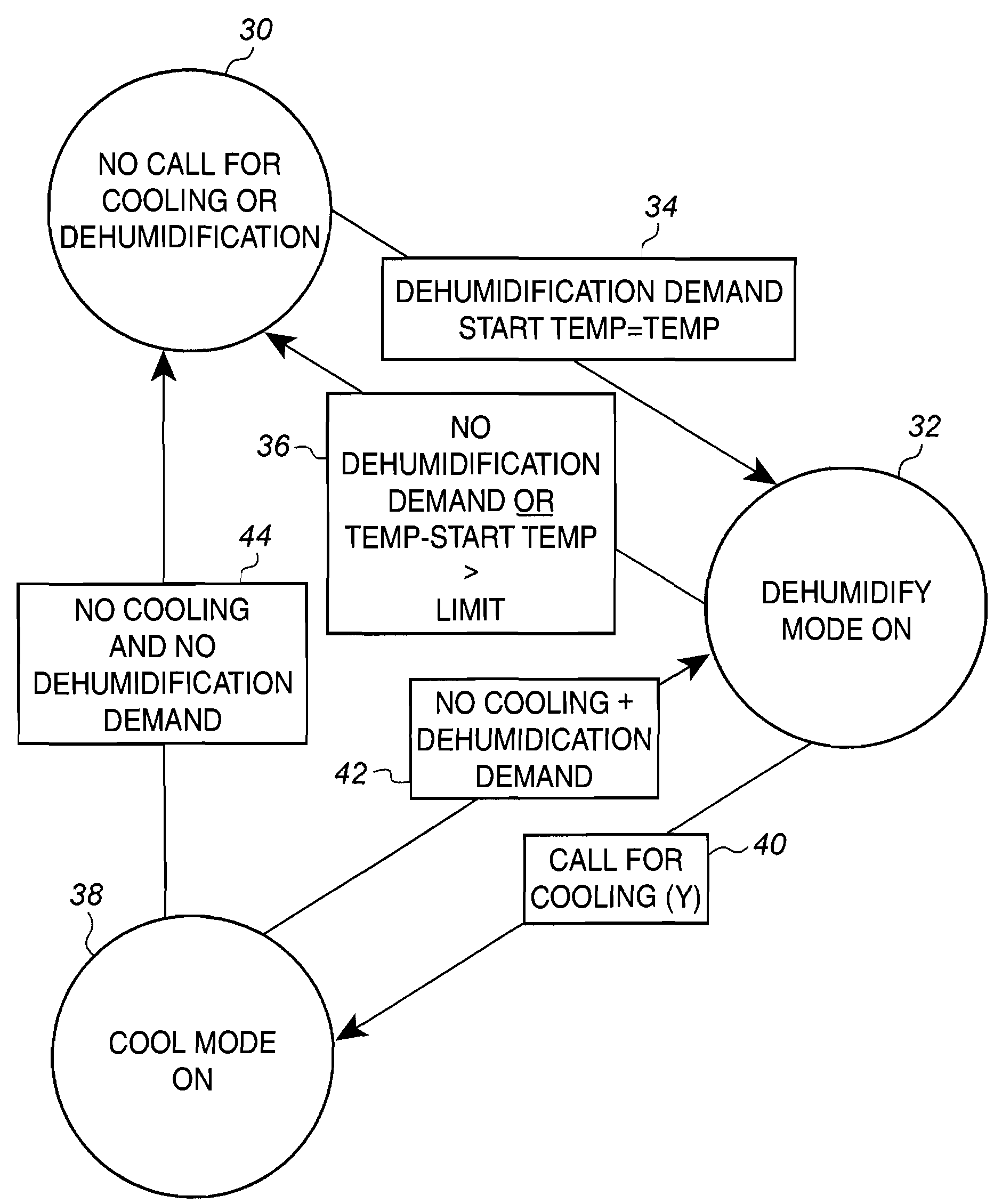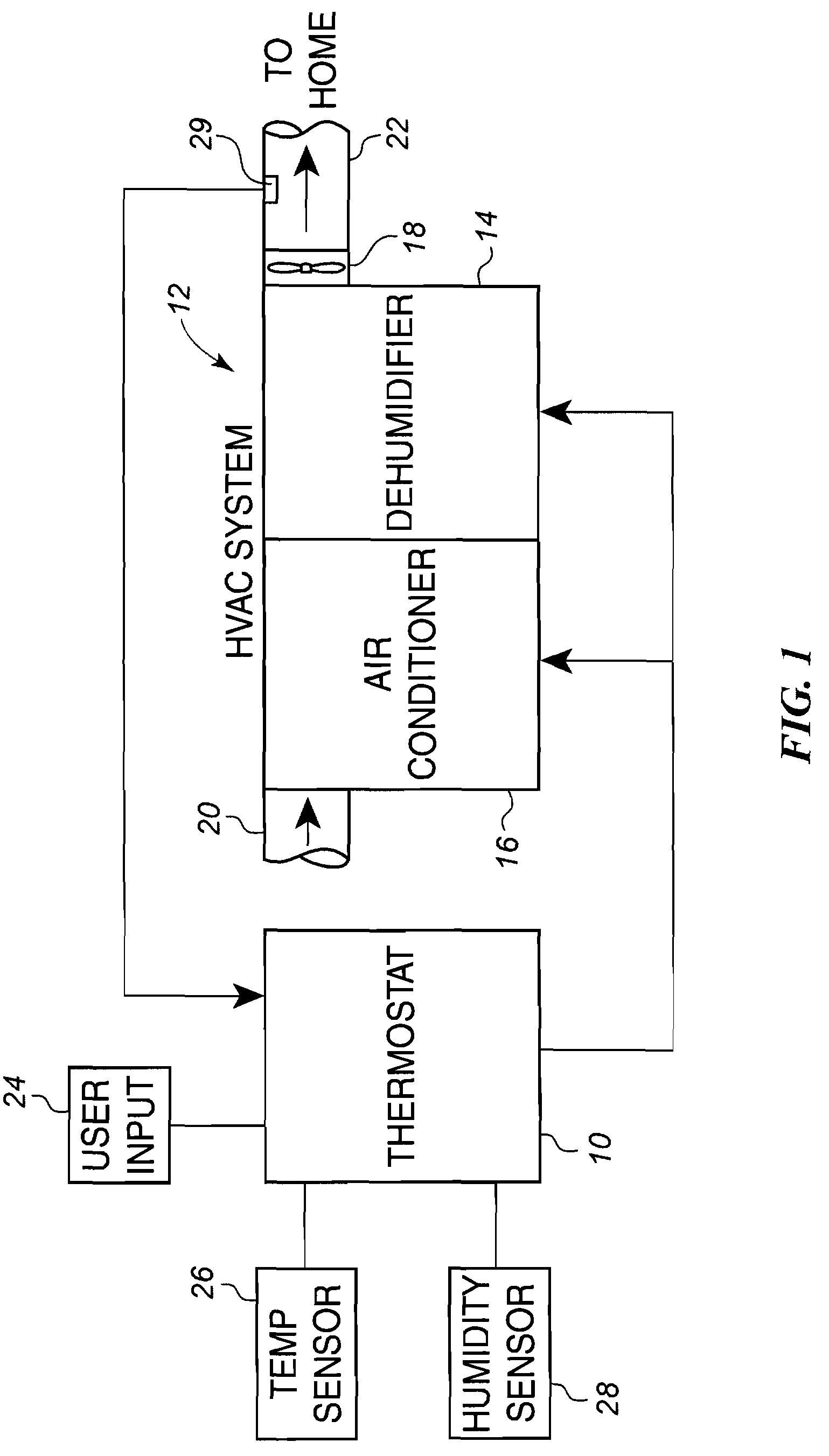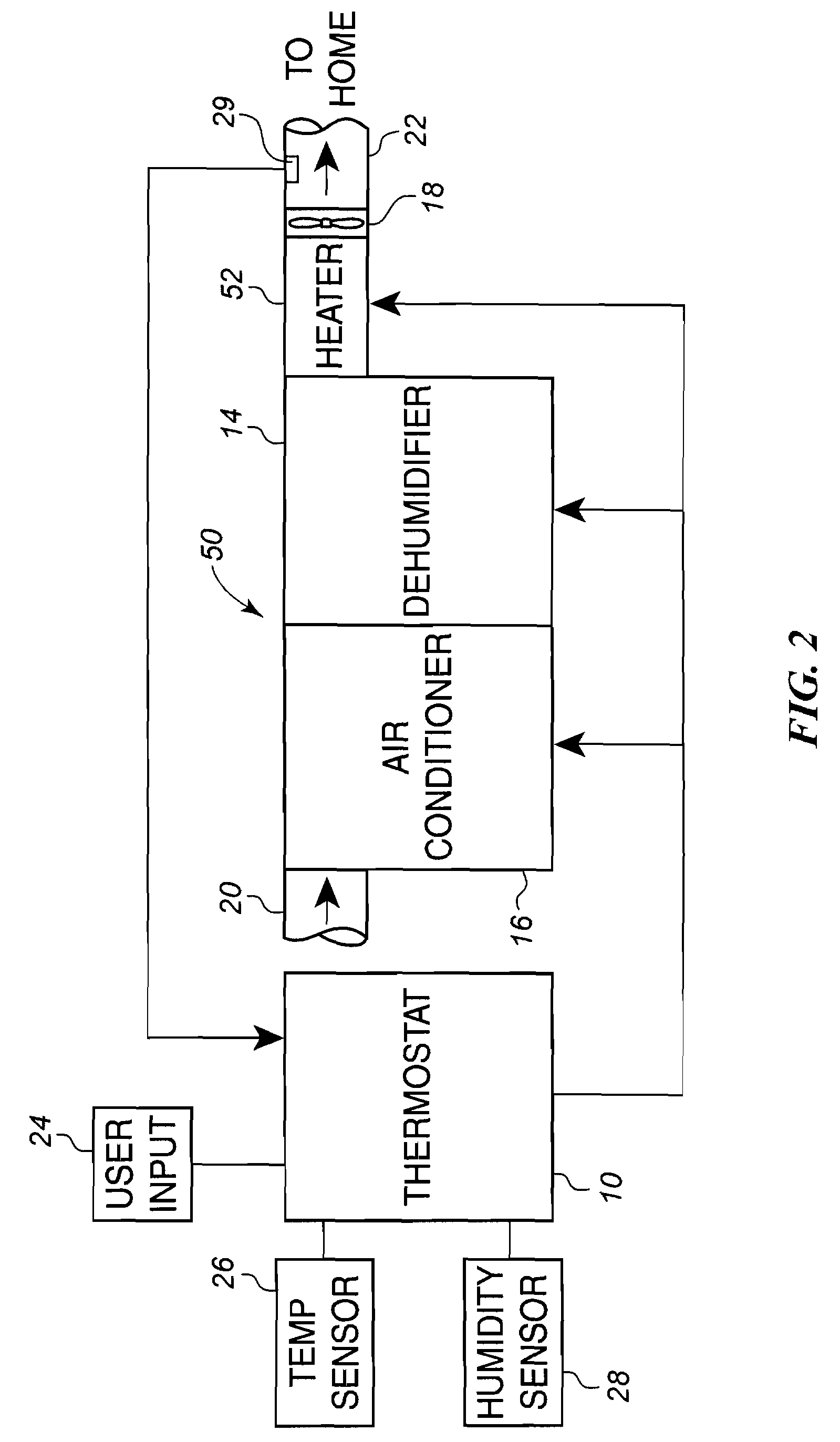Humidity control algorithm
- Summary
- Abstract
- Description
- Claims
- Application Information
AI Technical Summary
Benefits of technology
Problems solved by technology
Method used
Image
Examples
Embodiment Construction
[0018]Referring now to FIG. 1, thereshown is a thermostat 10 connected to an HVAC system 12 that includes both a dehumidifier 14 and an air conditioner 16. The HVAC system includes a blower 18 that draws a supply of air through an inlet duct 20 from the indoor air environment being conditioned through the HVAC system 12 and out of an outlet duct 22 for return to the home.
[0019]The thermostat 10 includes a user input 24 that allows the home occupant to enter the desired set point temperature for heating and cooling. Further, the user input 24 allows the home occupant to enter a desired set point for the relative humidity within the home. The thermostat 10 receives a temperature signal from the temperature sensor 26 and a humidity signal from the humidity sensor 28. Typically, the temperature sensor 26 and humidity sensor 28 are incorporated directly into the thermostat 10. However, the temperature sensor 26 and humidity sensor 28 can be located remotely from the thermostat and commun...
PUM
 Login to View More
Login to View More Abstract
Description
Claims
Application Information
 Login to View More
Login to View More - R&D
- Intellectual Property
- Life Sciences
- Materials
- Tech Scout
- Unparalleled Data Quality
- Higher Quality Content
- 60% Fewer Hallucinations
Browse by: Latest US Patents, China's latest patents, Technical Efficacy Thesaurus, Application Domain, Technology Topic, Popular Technical Reports.
© 2025 PatSnap. All rights reserved.Legal|Privacy policy|Modern Slavery Act Transparency Statement|Sitemap|About US| Contact US: help@patsnap.com



